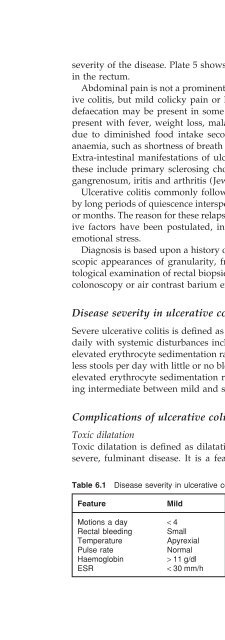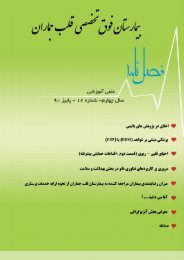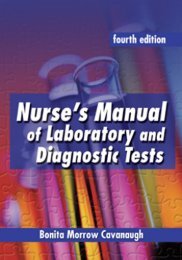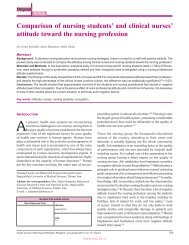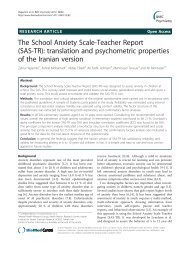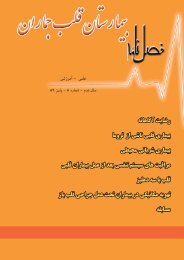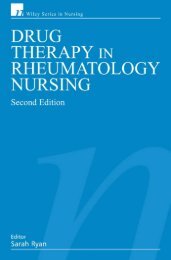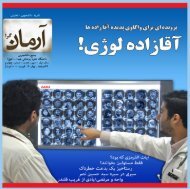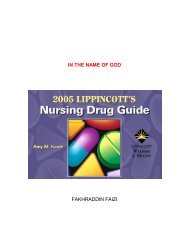Gastrointestinal Nursing.pdf
Gastrointestinal Nursing.pdf
Gastrointestinal Nursing.pdf
You also want an ePaper? Increase the reach of your titles
YUMPU automatically turns print PDFs into web optimized ePapers that Google loves.
The Large Intestine 87severity of the disease. Plate 5 shows an endoscopic view of ulcerative colitisin the rectum.Abdominal pain is not a prominent symptom for most patients with ulcerativecolitis, but mild colicky pain or lower abdominal discomfort relieved bydefaecation may be present in some patients. In severe disease, patients canpresent with fever, weight loss, malaise and lethargy. Weight loss is largelydue to diminished food intake secondary to anorexia. Systemic features ofanaemia, such as shortness of breath and ankle swelling, may also be present.Extra-intestinal manifestations of ulcerative colitis affect 10–20% of patients;these include primary sclerosing cholangitis, erythema nodosum, pyodermagangrenosum, iritis and arthritis (Jewell 2000a).Ulcerative colitis commonly follows a chronic intermittent course, markedby long periods of quiescence interspersed with acute attacks lasting for weeksor months. The reason for these relapses is usually unknown but several causativefactors have been postulated, including seasonality, drug ingestion andemotional stress.Diagnosis is based upon a history of chronic bowel disorder with sigmoidoscopicappearances of granularity, friability and bleeding confirmed by histologicalexamination of rectal biopsies. The extent of the disease is defined bycolonoscopy or air contrast barium enema.Disease severity in ulcerative colitisSevere ulcerative colitis is defined as the passage of six or more bloody stoolsdaily with systemic disturbances including fever, tachycardia, anaemia or anelevated erythrocyte sedimentation rate (ESR). Mild disease consists of four orless stools per day with little or no blood, the absence of systemic illness or anelevated erythrocyte sedimentation rate. Moderate disease is classified as beingintermediate between mild and severe (see Table 6.1).Complications of ulcerative colitisToxic dilatationToxic dilatation is defined as dilatation (> 6 cm) of the colon associated withsevere, fulminant disease. It is a feature of pan-colitis and most commonlyTable 6.1 Disease severity in ulcerative colitis (Truelove and Witts 1955).Feature Mild Moderate SevereMotions a day < 4 4–6 > 6Rectal bleeding Small Moderate Large amountsTemperature Apyrexial Intermediate > 37.8°CPulse rate Normal Intermediate > 90 beats a minuteHaemoglobin > 11 g/dl Intermediate < 10.5 g/dlESR < 30 mm/h Intermediate > 30 mm/h


